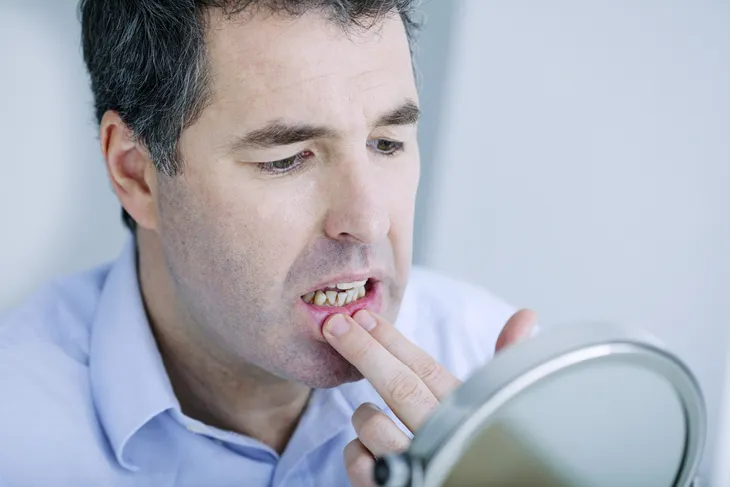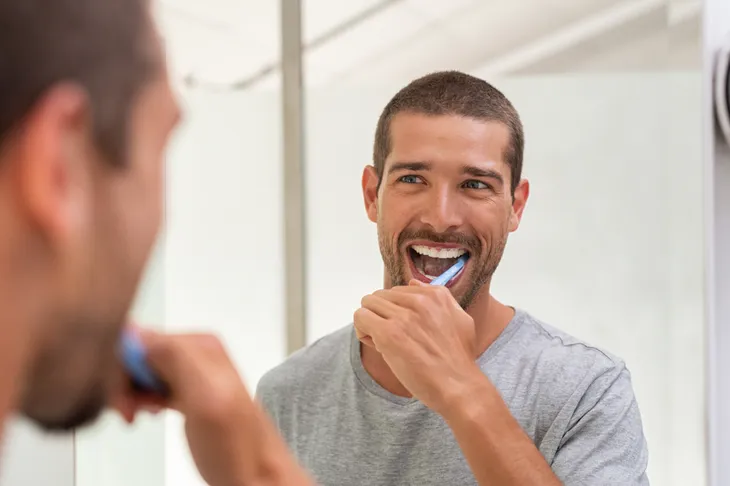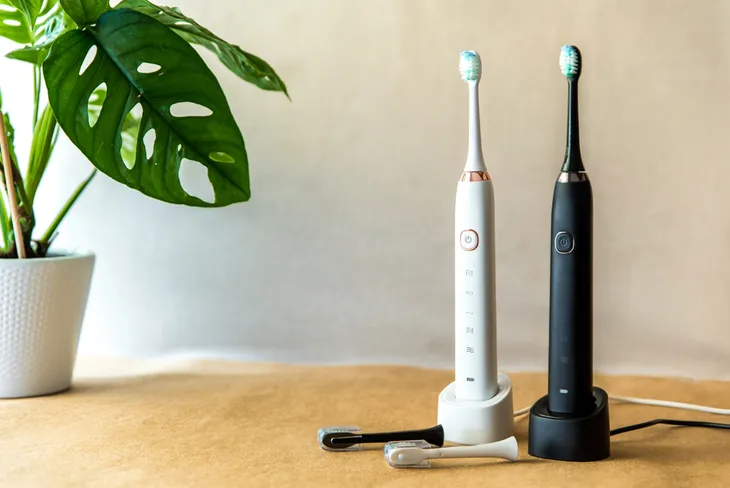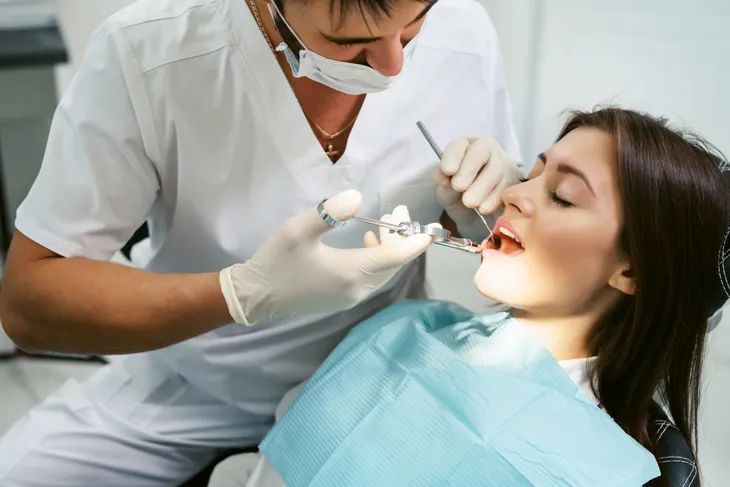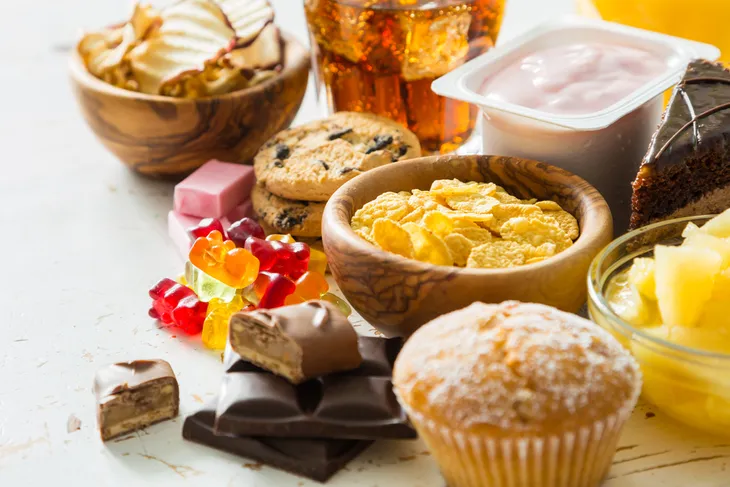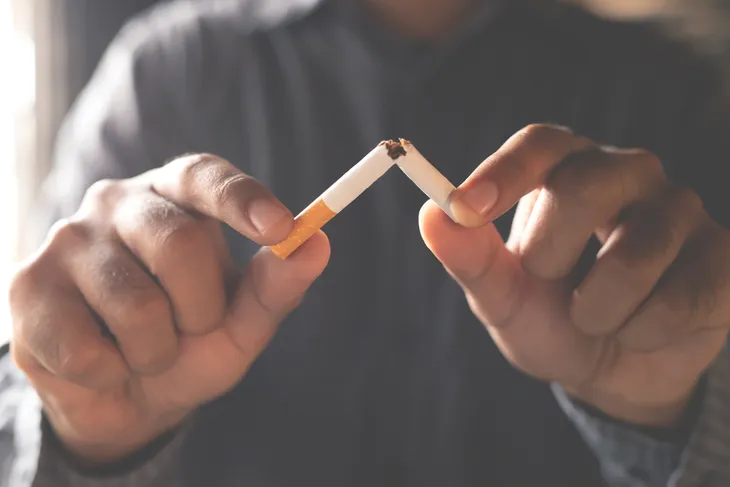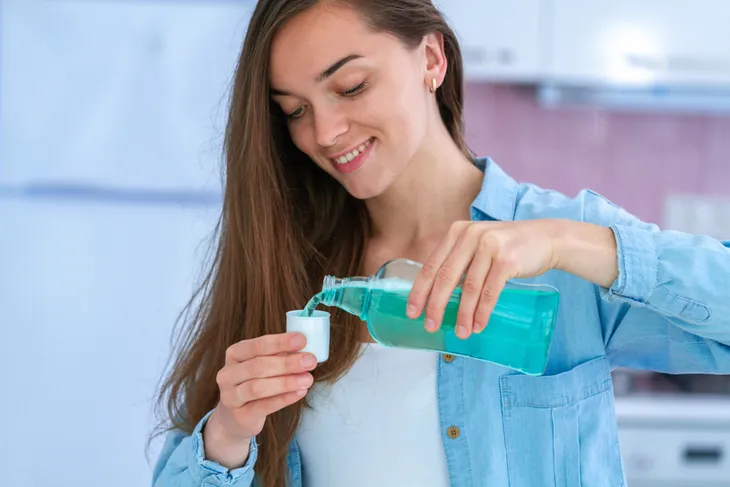Chances are you’ve seen commercials for toothpaste, toothbrushes, or mouthwash that brag about their ability to remove plaque, prevent cavities, and help you avoid gingivitis. And there’s a good chance you know that plaque is the bad stuff that builds up on our teeth and can lead to cavities, which are holes in our teeth. But do you really know what gingivitis is? Just as importantly, do you know what steps to take in order to prevent it?
Gingivitis is actually the inflammation of the gums. Typically, it’s caused by the buildup of plaque, the clear and sticky substance that builds up on the surface of our teeth in between brushings. Over time, and if left untreated, gingivitis can lead to painful gums that bleed. It may even result in gums becoming weak, increasing the chances of infection and loss of teeth. Thankfully, there are a number of relatively easy ways to prevent gingivitis and keep your mouth looking and feeling healthy.
Keep an Eye on Your Gums
The first and most basic way to prevent the development of gingivitis is to regularly inspect your gums to make sure they’re looking healthy. Gums that are suffering from the effects of gingivitis will look inflamed, meaning they could be red, puffy, and tender.
Gums affected by gingivitis may also bleed, particularly during and after a thorough brushing. If you see blood in your spit or see evidence of blood on your toothbrush, you may be suffering from the early onset of gingivitis. To prevent it from becoming a serious problem, regularly brush and floss your teeth, use mouthwash, and book an appointment with your dentist for an examination.
Brush Twice a Day
Arguably the most important way to prevent the onset of gingivitis is to brush your teeth at least twice a day, such as first thing in the morning (after breakfast) and right before going to bed. This will ensure that the plaque that builds up in your mouth over the course of the day and night is removed before it turns into tartar and begins to have a negative impact on your gums.
To increase your chances of preventing gingivitis, consider brushing more than twice a day. Although two brushes a day should be enough to prevent inflammation of the gums, brushing after every meal — including lunch — will do more to keep your mouth healthy. And don’t forget to use about a pea-sized amount of toothpaste, which can help in the removal of plaque and keep your mouth feeling fresh for longer.
Floss Every Day
Many people remember to brush their teeth at least twice a day, but far fewer take the time to floss. That’s a serious problem, as brushing — particularly with a traditional toothbrush — is rarely enough to remove plaque from in between the teeth. Flossing is especially important for people with dental infrastructures, such as braces.
The good news is that you really only need to floss once a day. If you work during the day, it’s a good idea to floss at night right before bed, as you’ll be in less of a hurry and more likely to do a thorough job. Be sure to use a mirror so you can see what you’re doing and ensure you’re removing the most plaque possible.
Use Approved Oral Health Products
Not all oral health products, like floss and toothpaste, are created equally. The best of these products are approved by major dental associations, such as the American Dental Association (ADA) or the Canadian Dental Association (CDA).
When shopping for toothpaste, toothbrushes, floss, mouthwash or other oral hygiene products, be sure that they have the seal of approval from a recognizable dental association like the ADA. If you don’t see that seal, it’s possible the product will be less effective in removing plaque and helping you thwart the onset of gingivitis.
Visit Your Dentist Regularly
Unless you’re good friends with your dentist, chances are you’d rather not spend too much time in his or her office. For many people with minor or major dental problems, visiting the dentist can be quite a trial, physically and mentally. In addition, if you don’t have dental coverage through work, visiting the dentist can get very expensive, very fast.
Nevertheless, in order to prevent the onset of gingivitis, it is absolutely crucial that you visit your dentist regularly — at least twice a year, and that’s if you get a clean bill of health at each check up. If your dentist tells you there’s a problem, such as a cavity or inflammation of the gums, you may want to increase your visits to his or her office, just to be sure these issues don’t get worse.
Watch What You Eat and Drink
From a young age, most children are told that it’s important to eat healthy in order to maintain healthy teeth and gums. Unfortunately, that can be extremely difficult if you’re tempted by unhealthy foods and beverages, including high-sugar favorites like soda, ice cream, cake, candy, or fruit juice.
Overall, the less sugar you consume, the less likely you’ll start to develop oral hygiene problems, from the build up of plaque to the development of cavities and gingivitis. Of course, because so many of our favorite foods have sugar in them, it’s nearly impossible to avoid sugar altogether. If you do eat high-sugar foods or drinks, just be sure to brush your teeth and floss afterwards.
Avoid Tobacco Products
Although the number of smokers continues to decline, thanks in large part to growing awareness of the enormous health costs of smoking cigarettes or cigars, there are still many people with this habit. Unfortunately, this presents serious problems for the mouth, as smoking is a major contributor to the onset of dental issues like gingivitis. In short, if you smoke, you’re far more likely to suffer from swollen, bleeding and inflamed gums.
Of course, it’s not just smoking tobacco that presents a problem. Chewing tobacco is also incredibly troublesome for your oral health, as it wears away the enamel and increases the chances of gums becoming inflamed. If you’re a smoker or user of chewing tobacco, be sure to brush and floss regularly and give some serious thought to quitting altogether.
Use Mouthwash
Although rinsing with mouthwash isn’t enough to prevent the development of cavities and gingivitis on its own, in combination with regular brushing and flossing it can significantly increase your chances of maintaining healthy teeth and gums.
When using mouthwash, be sure to swirl the fluid around your teeth for at least thirty seconds before spitting it out. You should also consider gargling with mouthwash, as this can help remove bacteria from the back of the mouth and upper throat area. Just be sure to avoid swallowing the mouthwash, as doing so can lead to an upset stomach.

